Is the MVP Dead? Rethinking Lean Startup Strategies
Startups are ditching bare-bones MVPs for more polished, testable products. Here’s why the lean startup playbook is getting a modern reboot.
The Minimum Viable Product (MVP) was once the gold standard of lean startup methodology, a stripped-down version of a product built to validate key assumptions before investing serious time or money. Instead of launching fully-featured software, founders could test the riskiest parts of their idea with real users and use feedback to iterate quickly:
This article is brought to you by Bits & Pretzels
Experience the Best of Europe’s Startup World — All Under One Roof
Join 7,500+ top VCs, LPs and founders at Bits & Pretzels Festival 2025 in Munich.
Network, learn and invest during Europe’s leading startup gathering happening right during the world-famous Oktoberfest from Sep 29 to Oct 1. Get access to the exclusive Investor Summit attended by top firms like a16z, Accel, Index and Sequoia.
Eric Ries first popularized the term in the Lean Startup, but it dates back to the early 2000s when Frank Robinson coined it to describe the “smallest thing you can build that delivers customer value.”
In its purest form, an MVP wasn’t about speed or shortcuts. It was a strategic tool for product validation, a way to learn what customers actually needed without wasting resources building what they didn’t.
The original appeal was simple - launch faster, learn faster, and pivot faster. A well-executed startup MVP helped founders avoid the classic trap of building in a vacuum. Instead of guessing, teams used real user behavior to guide the next build cycle.
This was the essence of the Build–Measure–Learn loop: get something into users’ hands quickly, measure the results, and improve accordingly.
In the 2010s, the MVP in product development became a playbook move for early-stage startups. Dropbox validated with a demo video. Airbnb launched with just air mattresses on a living room floor. These weren’t polished products. They were learning machines.
But what worked a decade ago isn’t always enough now. Today’s users expect more than “just viable.” They expect something worth coming back to. And that’s where the MVP model begins to show cracks.
Table of Contents
Why The MVP Debate Matters Now
Why Building an MVP Often Fails Today
Alternatives to the Startup MVP: What’s Replacing It?
The Role of AI and No-Code in Building an MVP Faster
Startup Validation: Successes and Failures
Strategic Recommendations for Modern Product Teams
The Future Beyond MVPs
FAQs on the Future of MVP
1. Why The MVP Debate Matters Now
The question “Is the MVP dead?” isn’t just a philosophical one. It’s a practical challenge every founder, product manager, and investor is now facing.
The market is noisier. Users are savvier. Tools are faster. And resources are tighter than ever.
Releasing a minimum viable product today means stepping into a world where hundreds of competitors are also racing to launch. But many of them are showing up with polished UX, smart automation, and built-in personalization, often powered by AI and no-code tools.
At the same time, feedback has become harder to interpret. Signal gets buried in feature requests. Metrics get gamed. And it’s no longer enough to ask if something “works,” you have to ask if it sticks.
This shift isn’t hypothetical. It’s happening now, across industries, across markets. That’s why product teams are rethinking the MVP and embracing new strategies that prioritize learning, speed, and user experience together.
🎁 MEGADROP: $50K in free AI tools (Notion, v0, Supabase...) + 2,000 Investors + 50 AI Pitch Decks 😳
Find it HERE, and please share the link with founders who may find it useful
2. Why Building an MVP Often Fails Today
The Minimum Viable Product was built for speed and learning. But in today’s landscape, speed alone doesn’t cut it. The same strategy that once helped startups move fast can now backfire, because the market, users, and tools have all changed.
Elevated User Expectations
Users today are used to seamless onboarding, sleek interfaces, and real-time performance. When a startup MVP shows up looking half-baked, it doesn’t feel “early.” It feels broken. Even early adopters now expect a baseline level of polish. If an MVP doesn’t deliver a thoughtful experience, users won’t stick around long enough to provide meaningful feedback.
Competitive Pressure
Today, most categories are already crowded. Launching a barebones minimum viable product gives competitors an easy template to copy and improve upon. What was once a differentiator becomes a blueprint for others to execute better and faster, especially with the rise of AI and no-code platforms accelerating product replication.
Resource Misallocation
Paradoxically, trying to build an MVP can waste time and capital when the focus shifts from learning to launching. Startups often over-engineer MVPs that don’t answer the right questions. Without clear hypotheses, MVPs become a false start, consuming resources without yielding clarity.
Eroded Trust
A poorly executed MVP can damage more than a roadmap. It can damage your brand. When early users experience something clunky or confusing, they don’t think, “This is a test.” They think, “This company doesn’t get it.” First impressions still matter, even in test mode.
In short, building an MVP today carries more risk than it used to. The bar has been raised, and a product that’s merely viable may no longer be enough to validate, differentiate, or grow.
3. Alternatives to the Startup MVP: What’s Replacing It?
As the limitations of the startup MVP become clearer, product teams are moving toward smarter, more experience-driven alternatives. These new frameworks keep the spirit of rapid learning but raise the bar on execution, design, and user connection.
Minimum Lovable Product (MLP)
The Minimum Lovable Product puts user emotion at the center. It’s not just about viability, it’s about delight. Instead of building something users will tolerate, an MLP aims to create something they’ll talk about, come back to, and recommend. It’s minimal in scope but intentional in impact. A polished interface, a thoughtful touch, or even a small surprise in onboarding, these are the moments that move a product from “usable” to lovable.

Simple, Lovable, Complete (SLC)
The SLC model pushes teams to ship something that feels whole, even if it’s small. A product following the Simple, Lovable, Complete approach doesn’t try to be everything, but it avoids feeling unfinished. It solves a single problem well, wraps it in a good user experience, and makes users feel confident they’re using a real product, not a prototype.
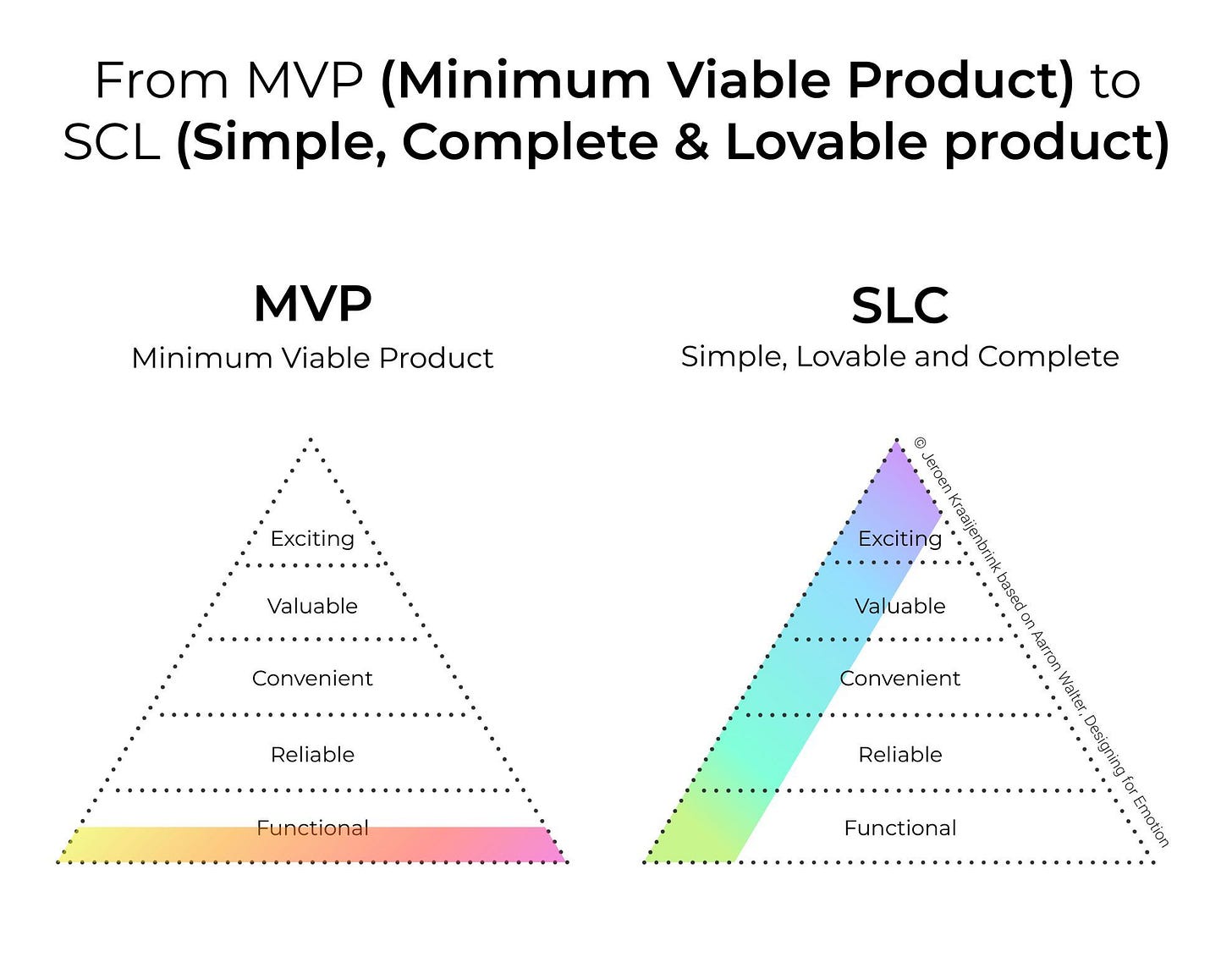
Minimum Viable Experiment (MVE)
An MVE flips the focus from product to hypothesis. Instead of asking, “What can we launch?”, it asks, “What can we learn?” A landing page, a fake door, a concierge test, these are all MVE tactics used to validate ideas without writing full product code. MVEs are especially powerful when time or funding is limited and the goal is learning, not launching.
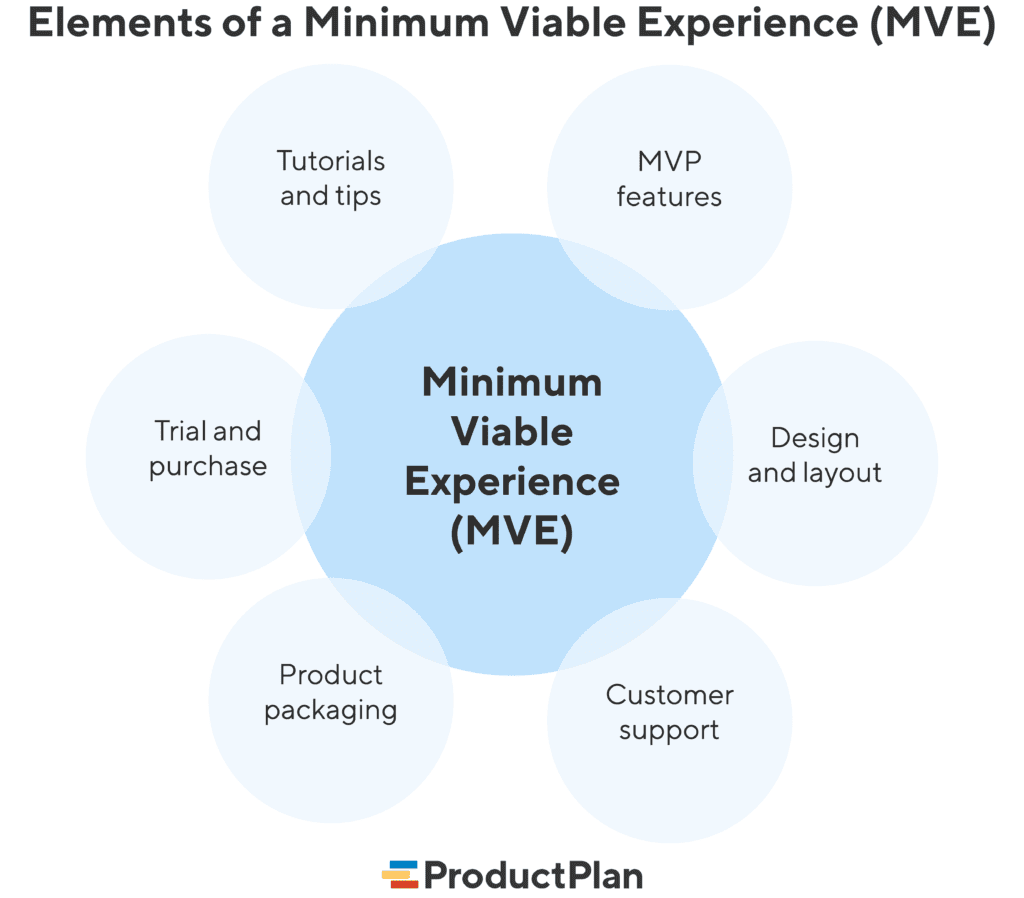
Minimum Awesome Product (MAP)
The Minimum Awesome Product is where functional meets impressive. It’s viable, yes, but it also has at least one standout feature that makes users say “wow.” It could be lightning-fast performance, an intuitive UX, or a unique hook. A MAP isn’t trying to be everything, but it’s trying to leave a mark.
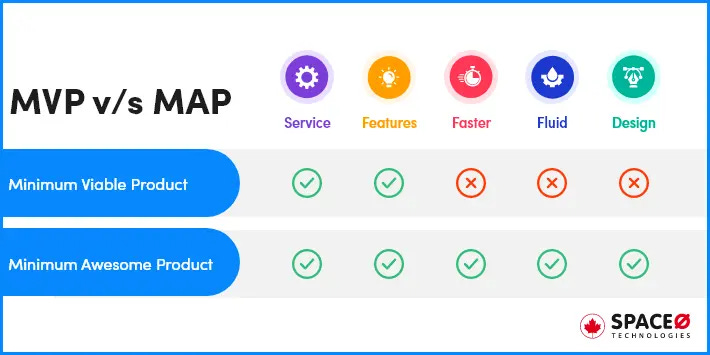
MVP vs. MLP vs. SLC vs. MVE vs. MAP
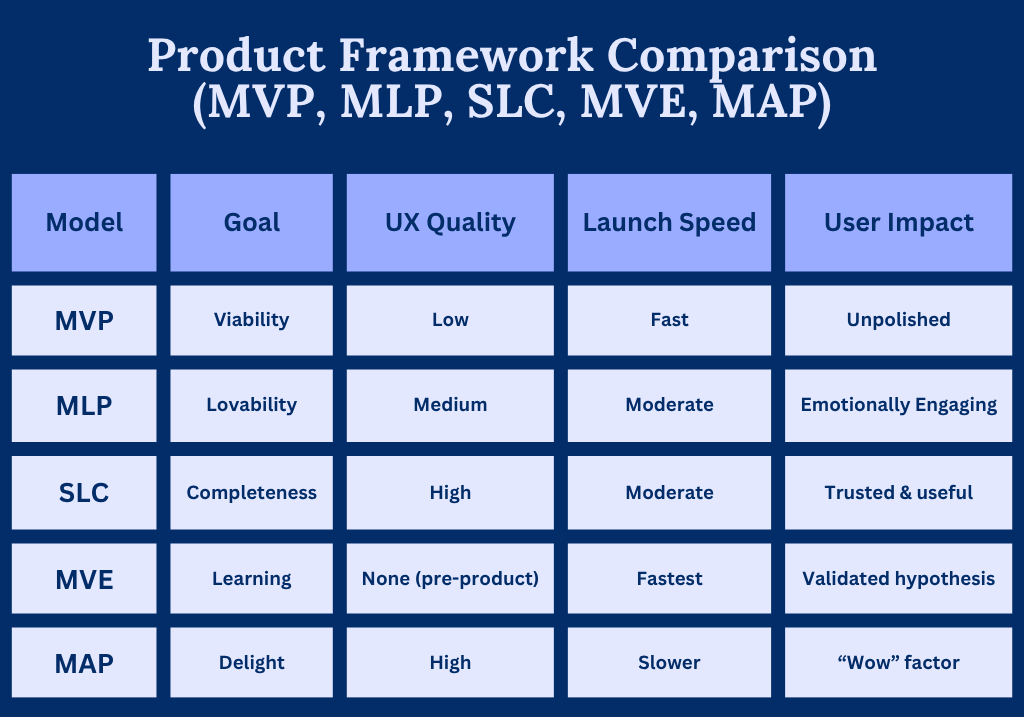
Together, these frameworks signal a shift: from shipping fast to shipping thoughtfully. From just working, to working and resonating. Startups today are realizing that in a saturated market, first impressions aren’t just learning opportunities. They’re growth opportunities. And they’re worth getting right.
4. The Role of AI and No-Code in Building an MVP Faster
Building a minimum viable product no longer requires a full engineering team or months of development. Thanks to the rise of no-code platforms and AI tools, product teams can move from idea to testable prototype in days, not weeks.
Accelerated Development
Tools like Bubble, Webflow, Glide, and Thunkable have made it possible to spin up web apps, mobile apps, and internal tools without writing code. For many startups, these platforms slash development timelines and reduce cost. What used to take a sprint or two can now be done in a weekend. Founders can ship a working version, run experiments, and start collecting feedback almost instantly.
Democratization of Development
Perhaps the biggest shift is who gets to build. With no-code MVP builders, non-technical founders and early product teams can execute on ideas without waiting for developer capacity. This lowers the barrier to entry and enables faster iteration cycles. In lean teams, it means validation isn’t bottlenecked by technical resources. It’s driven by curiosity and speed.
Enhanced Personalization
AI tools are raising the bar further by enabling personalization from day one. From GPT-powered onboarding flows to AI-driven user segmentation, startups can now tailor experiences without massive data infrastructure. AI doesn’t just make MVPs faster, it makes them smarter. A product that adapts to its users early on is more likely to retain them.
For today’s founders, this is as much about efficiency as it is about competitiveness. The faster you can test an idea, the sooner you can learn, iterate, and get ahead. Building an MVP with no-code and AI is no longer a workaround. It’s often the edge that makes the difference.
5. Startup Validation: Successes and Failures
There’s no better way to understand the limits of the minimum viable product than through the lens of what actually happens in the wild. Some startups thrive by going beyond the MVP. Others learn the hard way that “just viable” can be a trap.
Success: The MLP That Won Early Hearts
When Superhuman set out to build the fastest email experience on earth, they didn’t release a basic MVP. They built a Minimum Lovable Product, laser-focused on speed, elegant design, and deep onboarding. The team delayed the launch until the product was so good that early users loved it. The result was high retention, strong word of mouth, and a waitlist that stretched into the tens of thousands. Instead of testing viability, Superhuman tested desirability, and it paid off.
Failure: The MVP That Backfired
Juicero, the now-infamous startup that raised $120M to build a connected juicing machine, launched a bare-bones MVP with a slick device and proprietary juice packs. What they failed to test was whether the product actually solved a real problem. When users discovered they could squeeze the juice packs by hand, the value proposition collapsed. The MVP didn’t validate anything. It exposed a flaw the team never addressed. What followed was public ridicule, investor disappointment, and a quick shutdown.
These examples show two sides of startup MVP execution. One team focused on delight and alignment. The other focused on tech-first assumptions. One proved traction. The other proved that launching fast doesn’t matter if you’re solving the wrong problem.
Validation isn’t about shipping something minimal. It’s about learning something meaningful.
6. Strategic Recommendations for Modern Product Teams
The landscape has changed, but the goal remains the same: build what people want, faster and smarter. For teams navigating today’s product environment, here’s how to evolve beyond the old minimum viable product playbook and build with intention.
Prioritize User Experience
Even your first release needs to feel real. Users no longer give rough edges the benefit of the doubt. Whether you’re shipping a startup MVP or an MLP, invest in clean UX, intuitive flows, and design that earns trust. First impressions stick, and even early adopters expect quality.
Validate with Experiments
Before you build anything, ask: “What do we need to learn?” Then design a Minimum Viable Experiment (MVE) around that. Whether it’s a no-code landing page, a fake-door feature, or a concierge prototype, the goal is learning, not launching. MVE thinking prevents waste and sharpens focus.
Leverage Modern Tools
Speed and sophistication aren’t mutually exclusive anymore. Use no-code platforms like Loveable or Bubble to move fast. Layer in AI tools to personalize experiences, automate onboarding, or generate dynamic content. These tools make it possible to test bold ideas with lean teams and build products that feel anything but minimal.
Iterate Based on Feedback
The original spirit of the lean startup methodology still holds: build, measure, learn. But don’t just measure vanity metrics. Go deep on user behavior, qualitative insights, and emotional response. A tight feedback loop, backed by real data, is still your best tool for finding product-market fit.
Today’s most effective product teams aren’t chasing minimal. They’re chasing clarity, momentum, and connection. And they’re doing it with sharper tools, smarter tests, and higher expectations.
7. The Future Beyond MVPs
The minimum viable product helped launch a generation of startups. It taught us to ship fast, learn early, and stay lean. But the environment it was built for has changed.
Today’s users demand more. Markets move faster. Feedback is harder to parse. And products that feel incomplete don’t get a second look.
So, is the MVP dead? Not quite. Its evolving. The core principles of iterative development, fast learning, and user-driven design still matter. But how we apply them needs to adapt.
Whether you choose to build an MLP, an MVE, or something entirely new, the goal is the same: build with purpose, test with clarity, and deliver value that users can feel. Because in a world of unlimited options, it’s not enough to be viable. You have to be valuable from day one.
The future belongs to product teams that blend speed with substance, experiments with empathy, and data with instinct. That’s the new startup edge. And it’s already here.
8. FAQs on the Future of MVP
Are MVPs still relevant for startups?
Yes, but only when used intentionally. A minimum viable product is still valuable for testing assumptions, but it must meet higher user expectations today. The focus should be on validating core value with real users, not just launching something minimal for the sake of speed.
Do investors still care about MVPs?
Investors care about traction, not labels. An MVP can help demonstrate early demand, but they’re more interested in how fast you’re learning, how well you’re retaining users, and whether the product solves a real problem. A lovable or complete product often signals stronger execution.
What are better alternatives to MVPs?
Modern alternatives include the Minimum Lovable Product (MLP), Minimum Viable Experiment (MVE), Minimum Awesome Product (MAP), and Simple, Lovable, Complete (SLC). These models focus on delight, focused learning, and stronger UX, ensuring that early versions resonate with users and build trust from the start.
What’s the difference between an MVP and a prototype?
A prototype is typically a pre-product tool, used to test ideas visually or interactively, without full functionality. An MVP is a working product released to real users for feedback. Prototypes are for internal learning; MVPs are about real-world validation and user-driven iteration.
How much should an MVP cost to build?
It depends on the complexity, but with no-code tools and AI-driven platforms, early MVPs can cost as little as a few thousand dollars. The key is not budget, it’s clarity. Spend just enough to test your core assumption, learn quickly, and avoid building the wrong thing.


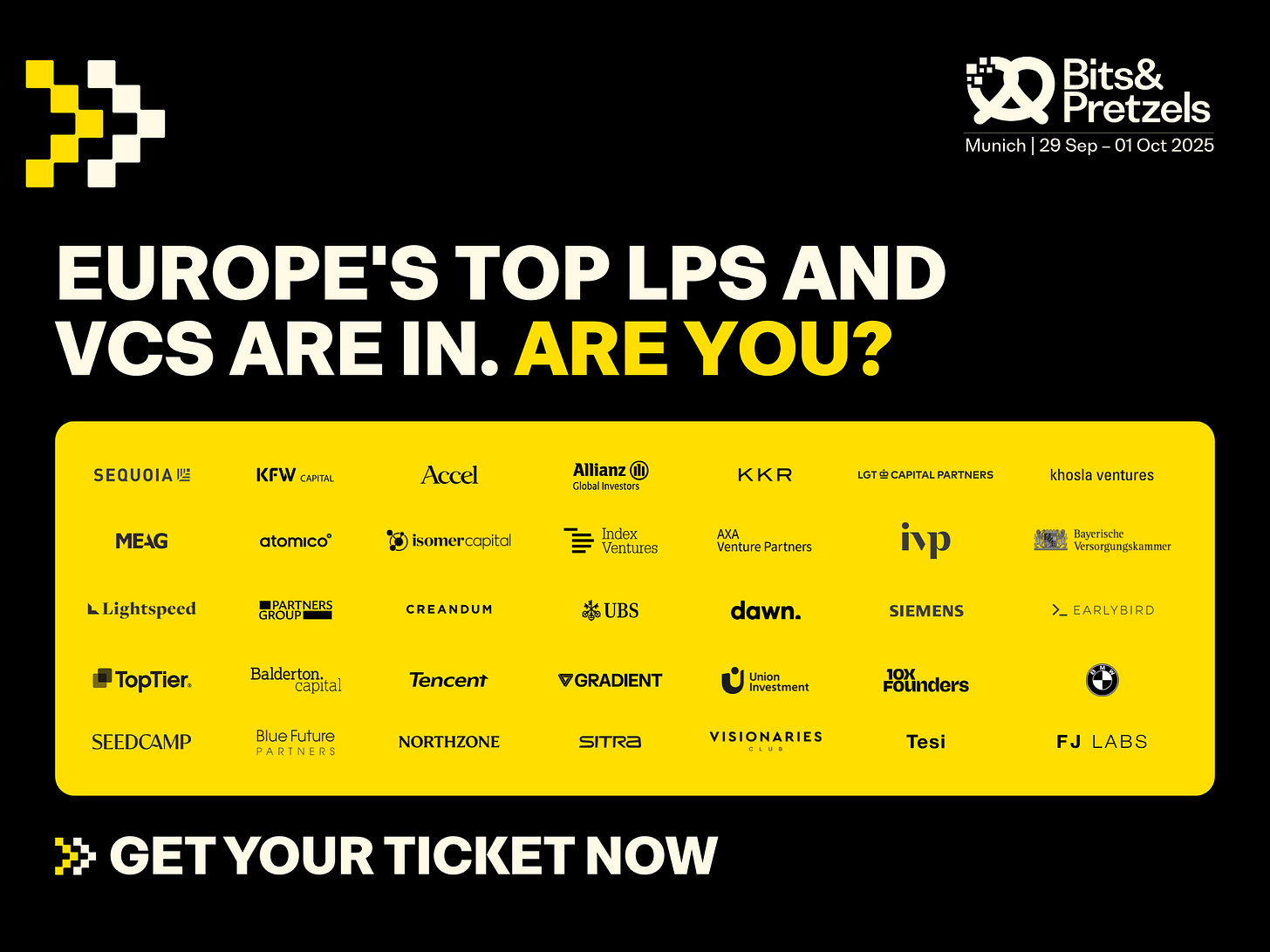
I’d argue that all of these are consistent with the underlying principles of lean startup. They all test different hypotheses but the capability to experiment at speed and without compromising quality has evolved massively. The concept of MVP isn’t predicated on poor UX it’s about validating assumptions at speed with the tools and resources available to you.
AI and vibe coding tools make resources abundant. The MVP concept was based on a time when resources in engineering were scarce. I am recommending everyone focus on an MSP or Minimum Sellable Product instead, because that's the real test. Can your prototype generate revenue?